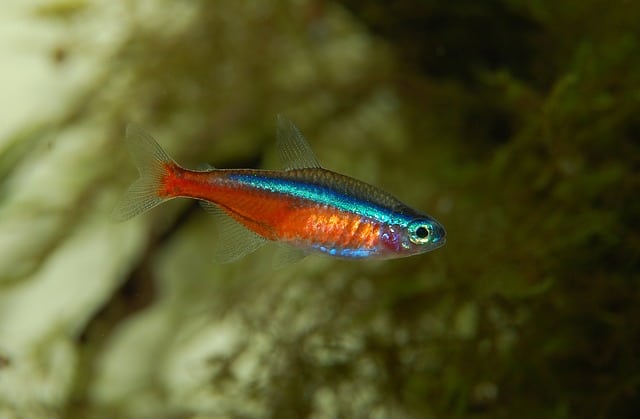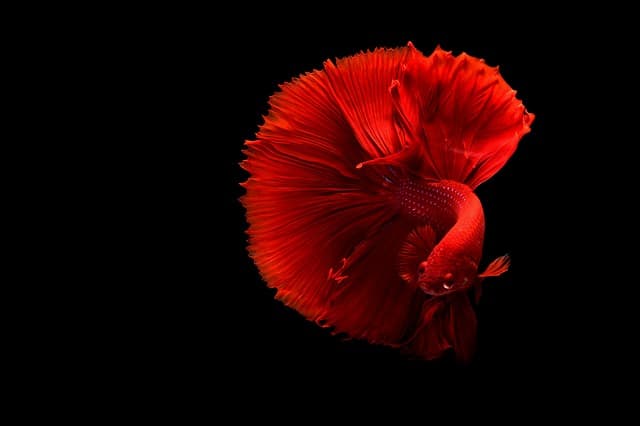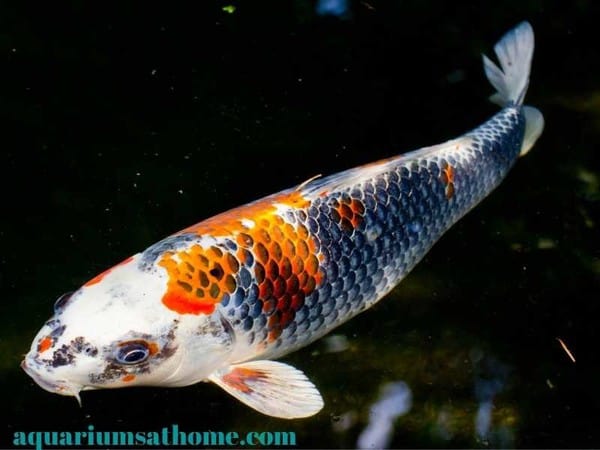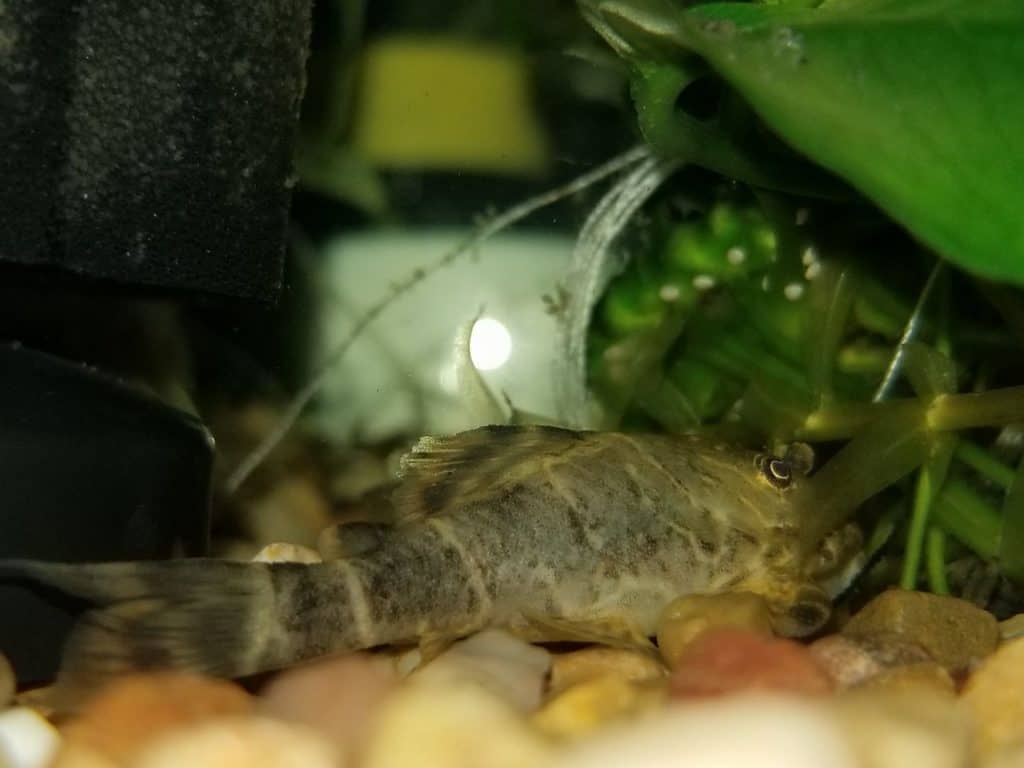Geophagus tapajos are a type of cichlid fish that are often referred to as redstriped eartheaters. Unique in both appearance and behavior, geophagus tapajos are generally peaceful in nature and fairly low maintenance. If you have geophagus tapajos, you may be wondering how to breed them in captivity?
To breed geophagus tapajos, begin with the proper aquatic environment. A large, low-lit tank with a temperature of at least 85-degrees Fahrenheit and a pH around 6.0 is recommended. Mimicking the water conditions in the wild during the breeding season is key so add some dark water extract as well.
Now that you know what to do to breed geophagus tapajos successfully, let’s explore this topic together in more detail. We’ll learn how to recognize the signs that this species is ready to breed, what water and tank conditions are best for breeding, and what to feed your fish to encourage breeding.
So, if you’re ready to learn more about encouraging geophagus tapajos to reproduce in captivity, then let’s begin!
What are the Signs that Geophagus Tapajos are Ready to Breed?
The first sign that your geophagus tapajos are ready to breed include the male digging shallow holes in the substrate. He’ll then try to encourage the female to ‘nest’ or lay her eggs in the holes so he can fertilize them. Males also tend to be more aggressive toward fellow tankmates prior to breeding.
Once fertilization takes place, the male and/or the female will pick up the eggs in his/her mouth and carrying them until they hatch. It usually takes about 3 days for the youngsters to emerge. If the babies feel threatened by other fish, they’ll quickly retreat – back to the safety of their parents’ mouths.
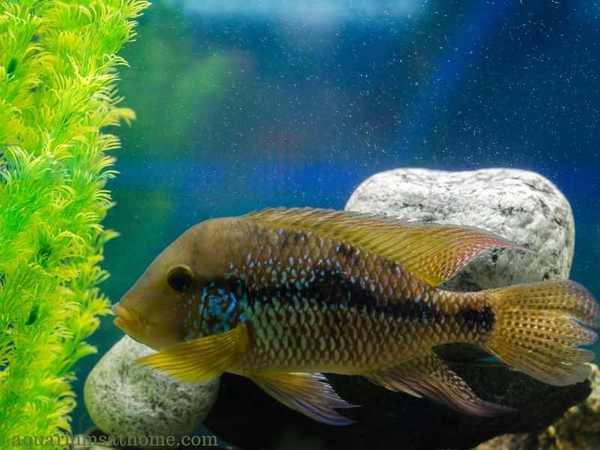
How do You Tell Male and Female Geophagus Tapajos Apart?
When purchasing geophagus tapajos for breeding purposes, the best way to tell the males and females apart is to look at their fins, tails, and heads. Males have longer fins, fuller tails, and more red coloring on the tops of their heads. As well, females tend to have rounder bellies, especially when fertile.
Until they reach at least a year of age, it’s almost impossible to determine their gender. As juveniles, geophagus tapajos are too small and look almost identical. Once they reach sexual maturity, you’ll be able to pick out the males as they’ll typically fight one another for territory and/or female attention.
Are Geophagus Tapajos Mouth Brooders?
Geophagus tapajos are mouth brooding or oral incubating fish. This means they’ll carry the eggs around in their mouths until they’re ready to hatch. Mouth brooders are extremely nurturing and continue to care for their fry by allowing them to retreat (back into their mouths) when in danger.
What Water Parameters are Best for Breeding Geophagus Tapajos?
The best water parameters for breeding geophagus tapajos are that which help the aquarium mimic the natural environment of the fish. Adding blackwater conditioner or dark water extracts (available on Amazon) is recommended since these agents work to recreate the darker color of the Amazon River during the flood season.
A slightly warmer than usual tank will also encourage geophagus tapajos to breed. Since the preferred temperature range for this species is 78- to 88-degrees Fahrenheit, keeping the heat at the higher for a few days is suggested.
A slightly more acidic tank is also advocated when it come to successful geophagus tapajo breeding. Since the recommended pH range for this species is 6.0 to 8.0, adding some peat moss to the aquarium will naturally reduce the pH level while helping to filter out contaminates in the water.
What Tank Conditions are Best for Breeding Geophagus Tapajos?
Tank conditions are important for successful breeding of geophagus tapajos. Since this species can reach full-grown lengths of 6 to 8 inches, a large tank (at least 55-gallons minimum) is required. If kept in too small of an aquarium, these fish will become stressed and hence, unable to reproduce.
Geophagus tapajos are bottom feeders and need soft, sandy substrate in their tank. During the breeding season, the males will dig holes or ‘nests’ for the females to lay their eggs in. They’ll then swim over the nests and fertilize the eggs. Avoid using gravel substrate as this can cause injury to the fish.
Keeping geophagus tapajos in small groups of 4 (1 male and 3 females) will increase their chances of procreation. If you don’t have a big enough tank to keep 4, then a mated pair will suffice. You’ll know the male is ready to spawn when he flares out his gills, ‘dances’ around, and chases after the female.
Geophagus tapajos must be kept with peaceful tankmates if they’re to reproduce successfully. Ensure they share the aquarium with herbivorous fish since carnivorous fish will likely eat the eggs and/or fry. As well, aggressive/territorial fish will cause tension, making it hard for geophagus tapajos to reproduce.
A safe environment with low light and plenty of hiding places is essential for geophagus tapajos to breed in captivity. The water must be clean and free of toxins. Weekly partial water changes (15-25%) along with a canister filter are required. As well, there should be plants, rocks, etc. to provide refuge for fry.
What Foods Help Promote Geophagus Tapajos Breeding?
Since geophagus tapajos are omnivorous, feeding them a well-balanced diet of both plant- and meat-based foods will help promote breeding. A variety of protein-rich edibles including live and/or frozen brine shrimp and bloodworms is encouraged as well as spirulina flakes and soft sinking cichlid pellets.
Feeding geophagus tapajos at least once a day with enough food to consume in a 2 to 3-minute time-period is recommended. You don’t want to overfeed them as this will alter the water parameters in the tank and increase toxic ammonia levels.
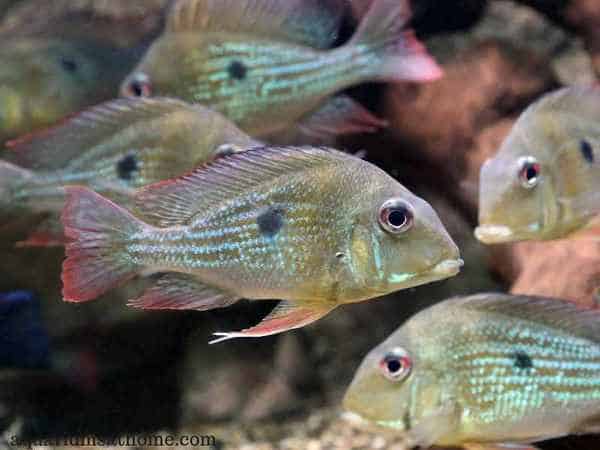
Why are My Geophagus Tapajos not Breeding?
Disease is the main reason why geophagus tapajos aren’t breeding. A sick fish is physically unable to reproduce. Should you notice your cichlid refusing to eat, acting lethargically, or losing coloration, then you must quarantine the unwell fish and begin treating it with antibiotics, depending on the ailment.
Stress is yet another reason why geophagus tapajos stop reproducing. If your cichlids are being harassed by other fish or living in an overcrowded tank that’s too small or ‘dirty’, they won’t be strong enough to procreate. Inaccurate water temperature, pH, and hardness also contribute to anxiety and ill-health.
A nutrient-deficient diet is yet a third reason why geophagus tapajos stop breeding. If your cichlids aren’t getting enough of the ‘proper’ food, they won’t be healthy enough to multiply. High-quality edibles rich in protein, vitamins, minerals, and amino acids are essential to successful reproduction.
Final Thoughts
To summarize, the proper aquatic environment is key to breeding geophagus tapajos successfully in captivity. Mimicking the water conditions in the wild during breeding season is a must. Making sure the temperature of the tank is at least 85 degrees Fahrenheit with a pH level around 6.0 is recommended.
I hope this article has been of help and answered all your questions about the reproduction habits of geophagus tapajos in captivity. Thanks for reading and good luck with your aquarium hobby.
Recommended Posts
How to Bring Out Color in Cichlids
What Cichlids Can Live Together?
Can Cichlids Live with Other Tropical Fish?
How to Stop Tropical Fish from Breeding



